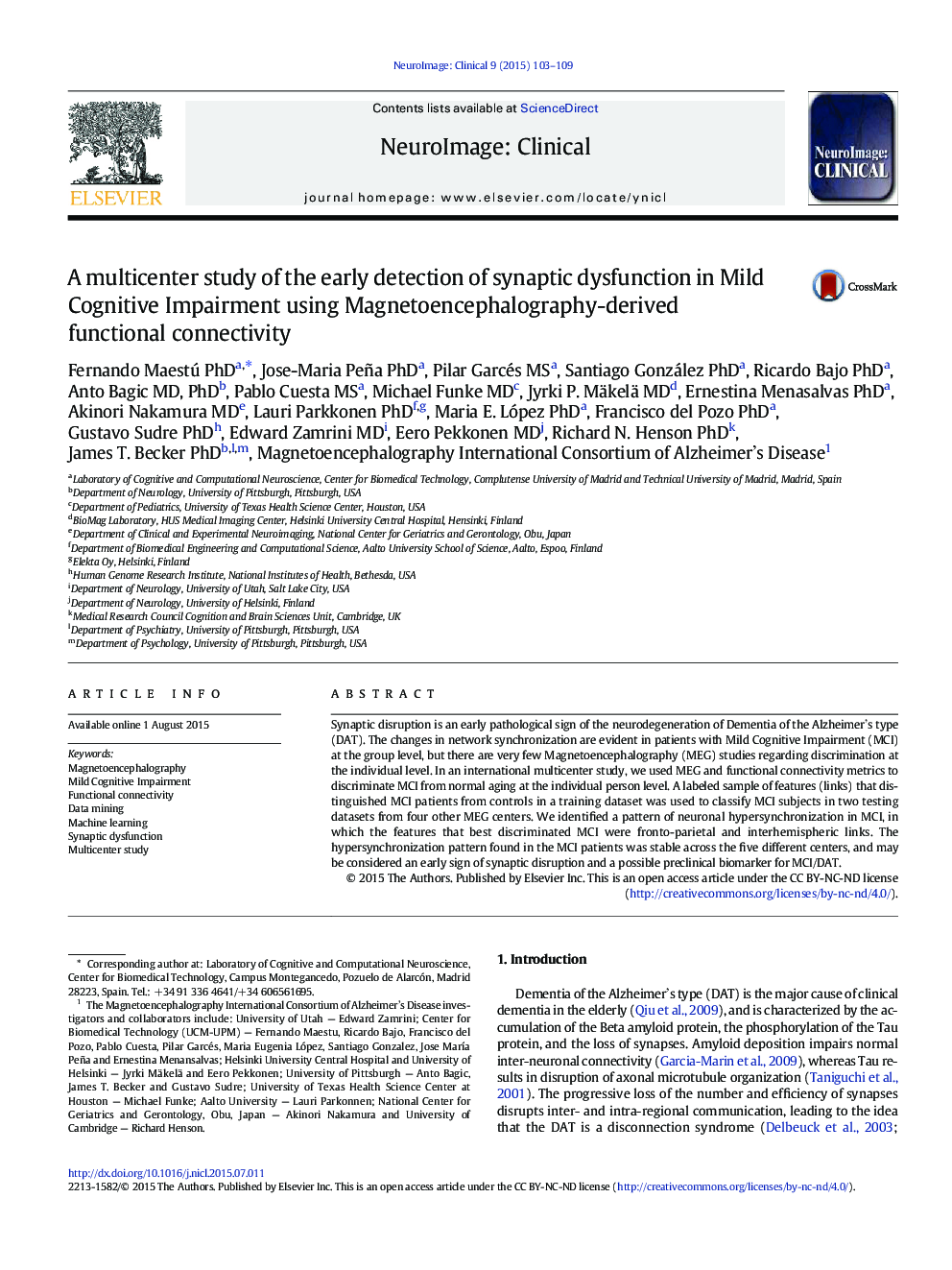| Article ID | Journal | Published Year | Pages | File Type |
|---|---|---|---|---|
| 3075160 | NeuroImage: Clinical | 2015 | 7 Pages |
•Across centers reliable abnormalities in the neuronal network organization of MCI patients•These findings are consistent with the view that AD may, in its earliest stages, represent a disconnection syndrome.•A high rate of classification accuracy in a blind study, especially for individuals who were cognitively normal•All these suggest that MEG may be a useful marker of preclinical synaptic disruption.•The hypersynchronization found in MCI patients may represent a compensatory response.
Synaptic disruption is an early pathological sign of the neurodegeneration of Dementia of the Alzheimer's type (DAT). The changes in network synchronization are evident in patients with Mild Cognitive Impairment (MCI) at the group level, but there are very few Magnetoencephalography (MEG) studies regarding discrimination at the individual level. In an international multicenter study, we used MEG and functional connectivity metrics to discriminate MCI from normal aging at the individual person level. A labeled sample of features (links) that distinguished MCI patients from controls in a training dataset was used to classify MCI subjects in two testing datasets from four other MEG centers. We identified a pattern of neuronal hypersynchronization in MCI, in which the features that best discriminated MCI were fronto-parietal and interhemispheric links. The hypersynchronization pattern found in the MCI patients was stable across the five different centers, and may be considered an early sign of synaptic disruption and a possible preclinical biomarker for MCI/DAT.
